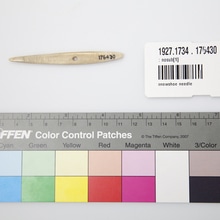
snowshoe needle
The Field Museum
1927.1734 . 176430
« The manufacture of snowshoes among the Lake St. John and Mistassini Indians has been described in considerable detail by Lips (1947, pp. 69-77) and Rogers (1967, pp. 91-101). The webbing was laced with a needle, of which there are six in the collection, one made of wood and five of bone. These ...
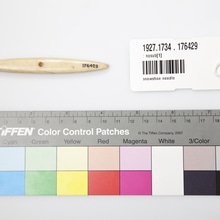
snowshoe needle
The Field Museum
1927.1734 . 176429
« The manufacture of snowshoes among the Lake St. John and Mistassini Indians has been described in considerable detail by Lips (1947, pp. 69-77) and Rogers (1967, pp. 91-101). The webbing was laced with a needle, of which there are six in the collection, one made of wood and five of bone. These ...
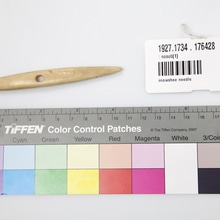
snowshoe needle
The Field Museum
1927.1734 . 176428
« The manufacture of snowshoes among the Lake St. John and Mistassini Indians has been described in considerable detail by Lips (1947, pp. 69-77) and Rogers (1967, pp. 91-101). The webbing was laced with a needle, of which there are six in the collection, one made of wood and five of bone. These ...

snowshoe needle
The Field Museum
1927.1734 . 176427
« The manufacture of snowshoes among the Lake St. John and Mistassini Indians has been described in considerable detail by Lips (1947, pp. 69-77) and Rogers (1967, pp. 91-101). The webbing was laced with a needle, of which there are six in the collection, one made of wood and five of bone. These ...
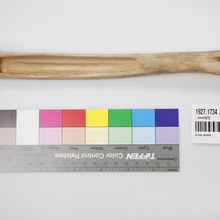
draw shave
The Field Museum
1927.1734 . 176426
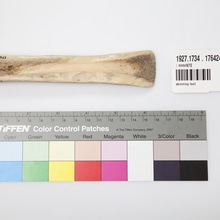
skinning tool
The Field Museum
1927.1734 . 176424
« For skinning beaver and other animals, a bone skinning tool was used. Of the four specimens in the Speck collection, one, collected in the Kiskisink settlement, is made from a transversally cut bear's leg bone beveled at the working edge (fig. 4i). The other three are moose leg bones, two of wh...
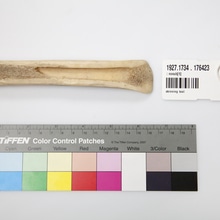
skinning tool
The Field Museum
1927.1734 . 176423
« For skinning beaver and other animals, a bone skinning tool was used. Of the four specimens in the Speck collection, one, collected in the Kiskisink settlement, is made from a transversally cut bear's leg bone beveled at the working edge (fig. 4i). The other three are moose leg bones, two of wh...
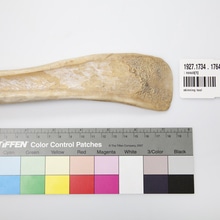
skinning tool
The Field Museum
1927.1734 . 176422
« For skinning beaver and other animals, a bone skinning tool was used. Of the four specimens in the Speck collection, one, collected in the Kiskisink settlement, is made from a transversally cut bear's leg bone beveled at the working edge (fig. 4i). The other three are moose leg bones, two of wh...
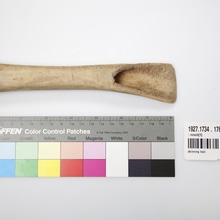
skinning tool
The Field Museum
1927.1734 . 176421
« For skinning beaver and other animals, a bone skinning tool was used. Of the four specimens in the Speck collection, one, collected in the Kiskisink settlement, is made from a transversally cut bear's leg bone beveled at the working edge (fig. 4i). The other three are moose leg bones, two of wh...
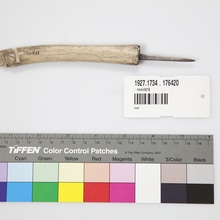
awl
The Field Museum
1927.1734 . 176420
« Awls are described as wood-working tools because, according to Rogers (1967, p. 47), they were used by the Mistassini to make holes in snowshoe frames for the selvage thongs. However, they were certainly also used for making holes in hides. Of the three awls in the Speck collection, two have ci...